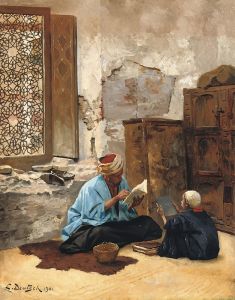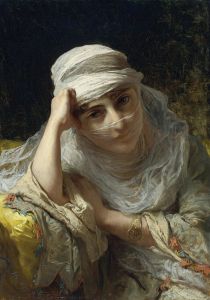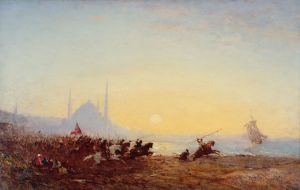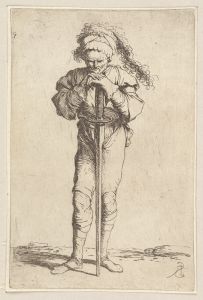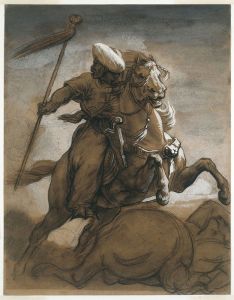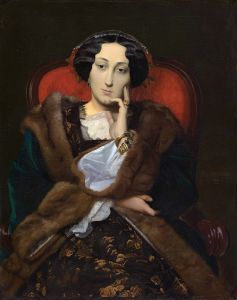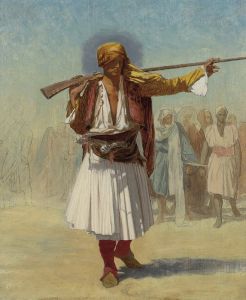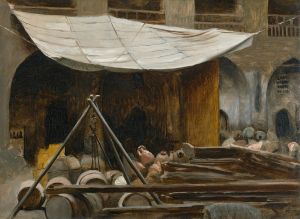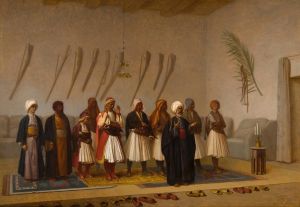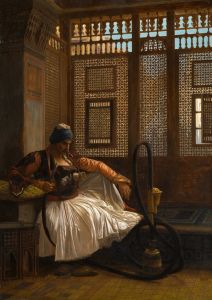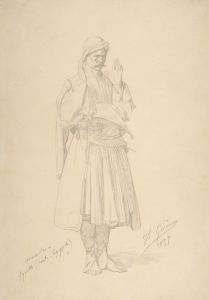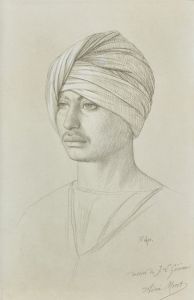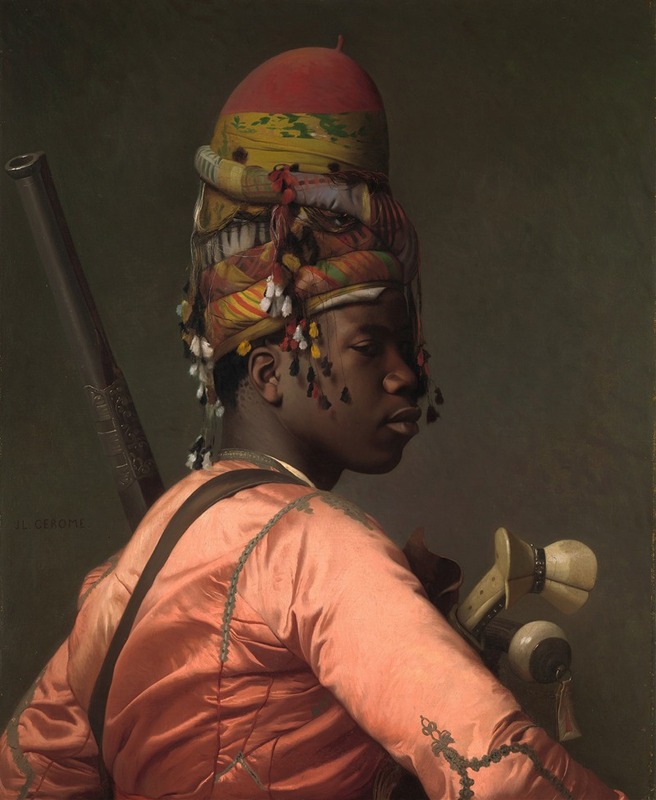
Bashi-Bazouk
A hand-painted replica of Jean-Léon Gérôme’s masterpiece Bashi-Bazouk, meticulously crafted by professional artists to capture the true essence of the original. Each piece is created with museum-quality canvas and rare mineral pigments, carefully painted by experienced artists with delicate brushstrokes and rich, layered colors to perfectly recreate the texture of the original artwork. Unlike machine-printed reproductions, this hand-painted version brings the painting to life, infused with the artist’s emotions and skill in every stroke. Whether for personal collection or home decoration, it instantly elevates the artistic atmosphere of any space.
Jean-Léon Gérôme's painting "Bashi-Bazouk" is a notable work by the French artist, who was renowned for his detailed and historically themed compositions. Gérôme, a prominent figure in the 19th-century academic art scene, was known for his precise and realistic style, often incorporating elements of Orientalism—a genre that depicted the East as seen through Western eyes.
"Bashi-Bazouk" was completed in 1868 and is part of a series of works by Gérôme that explore the theme of the Bashi-Bazouks, who were irregular soldiers of the Ottoman Empire. The term "Bashi-Bazouk" translates to "headless" or "leaderless," reflecting their status as non-regular troops who were often undisciplined and notorious for their lack of formal command structure. These soldiers were known for their distinctive and colorful attire, which Gérôme captures with meticulous attention to detail in his painting.
The painting depicts a single Bashi-Bazouk soldier, portrayed in a half-length view. The figure is dressed in an elaborate and richly colored costume, which includes a turban and a vest adorned with intricate patterns. Gérôme's skillful use of light and shadow highlights the textures of the fabrics and the soldier's facial features, creating a lifelike representation that draws the viewer's attention to the subject's expression and attire.
Gérôme's interest in Orientalist themes was influenced by his travels to the Middle East and North Africa, where he gathered inspiration and material for his artworks. His depictions of Eastern subjects were characterized by a blend of romanticism and realism, often focusing on the exotic and the picturesque aspects of the cultures he encountered. "Bashi-Bazouk" is a prime example of this approach, showcasing Gérôme's ability to combine historical accuracy with artistic imagination.
The painting is housed in the collection of the Metropolitan Museum of Art in New York City, where it continues to be appreciated for its artistic merit and historical significance. Gérôme's work, including "Bashi-Bazouk," played a significant role in shaping Western perceptions of the East during the 19th century, contributing to the broader Orientalist movement in art.
While Gérôme's Orientalist works have been critiqued for perpetuating stereotypes and exoticizing Eastern cultures, they remain important for their technical excellence and their reflection of the cultural attitudes of the time. "Bashi-Bazouk" stands as a testament to Gérôme's mastery of detail and his ability to capture the complexity of his subjects, offering viewers a glimpse into the world of the Ottoman Empire's irregular soldiers through the lens of 19th-century European art.





